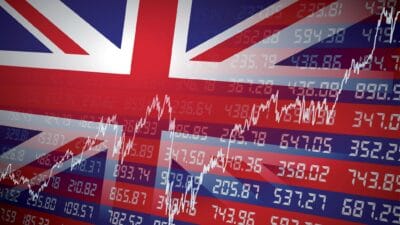With the Unilever (LSE: ULVR) share price near 4,179p, the gain for shareholders has been just over 17% over the past year.
But in August 2019, the stock was above 5,000p. And I reckon the fast-moving consumer goods (FMCG) company looks set to go there again, with even more progress beyond that. However, positive expectations are not nailed-on certainties. And that’s because even quality enterprises can suffer from operational setbacks from time to time.
Passive income stocks: our picks
Do you like the idea of dividend income?
The prospect of investing in a company just once, then sitting back and watching as it potentially pays a dividend out over and over?
If you’re excited by the thought of regular passive income payments, as well as the potential for significant growth on your initial investment…
Then we think you’ll want to see this report inside Motley Fool Share Advisor — ‘5 Essential Stocks For Passive Income Seekers’.
What’s more, today we’re giving away one of these stock picks, absolutely free!
Steady trading and financial record
Nevertheless, my optimism is based on the steady nature of the firm’s financial and trading record. Companies in the FMCG sector are known for the way brand strength tends to drive customer loyalty. And that often leads to plenty of regular repeat custom, which is good for cash flow.
With Unilever, we are talking about names such as Bovril, Cif, Colman’s, Comfort, Marmite and Persil. But they are just a handful of around 400 brands the company owns worldwide.
And they’ve been working well for the business. For example, the compound annual growth rates (CAGR) for revenue, earnings and cash flow are all positive. And they’re running at low single-digit percentages.
Such steady performance has enabled the directors to grow the dividend. And the multi-year growth rate for shareholder payments is running near 3.35%.
Now those figures don’t blow the top off the bottle. But it’s consistency that counts. For example, the pandemic is barely perceptible in the numbers. And the company kept up those all-important dividend payments throughout the crisis.
A less demanding valuation
Meanwhile, today’s valuation is less demanding than it was a few years ago. For example, the historic dividend yield is around 3.6%, based on 2022’s figures.
But I reckon the company has the potential to keep its dividend CAGR running near the current level for the next 10 years. And if that happens, the dividend for 2032 will likely be around 39% higher than 2022’s.
In that scenario, the share price would need to increase to just above 5,800p to maintain the current dividend yield. However, the actual outcome will depend on lots of variables. For example, Unilever reports in euros, so currency exchange rates are a risk. And another is that trading may not continue as smoothly for the next decade.
But equally, trade may be better for the business than it has been. And investor sentiment could improve causing the valuation to rise again. Nothing is certain. But the business also has a habit of buying back its own shares. And that tendency may add support to the share price in the years ahead.
Meanwhile, February’s full-year results report was robust. And chief executive Alan Jope said the business is improving its growth profile. For example, as part of that move, the company recently sold its global tea business and acquired Nutrafol.
Overall, the outlook statement was positive. And Unilever is worth researching now as a possible candidate for a diversified, long-term portfolio.







